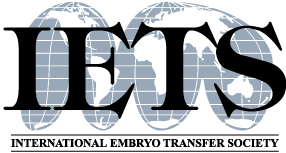Proper Nutrition
By Agtech on September 25, 2019
Proper nutrition in both A.I. and ET programs is essential for success.
The current market environment with depressed commodity prices across the board no doubt has producers contemplating what line items in their list of variable costs to eliminate and scale back on. We strive to produce you with the lowest cost, highest value embryo transfer supplies and equipment so you can free additional dollars up to purchase more costly inputs such as FSH and feedstuffs.
It’s our opinion that a solid nutrition program should not be a place to nickel and dime.
At Agtech, we field many calls and inquiries regarding donor and recipient nutrient management strategies. Many of these conversations unfortunately occur after less than desirable results in heat response, stimulation, embryo production, or conception have already been observed.
The vast majority of our customers take excellent care of their breeding females. Ideally donor cow candidates should be a body condition score of around 5.5 prior to calving and heifers closer to a 6. Most the donor and recipient herds we discuss with clients fall well within this window, so we must take a closer look at other circumstances affecting the cattle.
Getting to the bottom of these issues is challenging. Much like peeling back the multiple layers of an onion: The deeper you go, the more detail seems to be uncovered, which in turn generate more questions. I have a standard set of questions regarding nutrition that I ask our customers who are experiencing difficulties:
- Has a feed and forage analysis on all items being fed to your donors and recipients been collected? If so, what were the results?
- How has the feed and forage been stored? Any chance for mold, spoilage, damage?
- Are the cattle fed on a consistent schedule? i.e. same time, every day, by the same person.
- Tell me about your mineral program. What products are you using? How is it delivered?
- Have you monitored intake of these mineral products?
- Have you conducted soil samples in your pastures to identify deficiencies in available essential elements?
- Have you ever considered conducting a liver biopsy analysis on your entire cowherd?
- Have you ever considered hiring a nutritionist to assist you with ration formulation for your ET program?
In many cases the answer to a majority of these questions is “no” or “I’m not sure”. Running a cattle operation requires attention to so many details. Many things we deem not a critical priority are pushed to the back burner until time allows us to investigate further or collect data. We’d like to encourage folks to take the extra time to answer the questions above before they start their ET projects. It lays a foundation for better results down the road.





